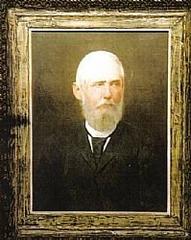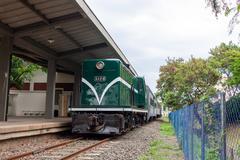Igreja São Benedito Itu: Visiting Hours, Tickets, and Historical Significance
Date: 14/06/2025
Introduction
Igreja São Benedito, located in the heart of Itu, São Paulo, Brazil, is a powerful symbol of faith, resilience, and Afro-Brazilian cultural heritage. Established by the Irmandade de São Benedito in 1693, the church has served as a spiritual sanctuary and a cornerstone of the local Black community for centuries. Its evolution—from its humble origins and destruction by fire in 1907, to its reconstruction in 1910—embodies the community’s unwavering commitment to preserving both their faith and cultural identity. Today, Igreja São Benedito stands not only as a monument of religious devotion but as an active center for cultural expression, particularly evident during the annual Festa de São Benedito.
This comprehensive guide explores the church’s rich history, architectural features, visiting information, and the broader context of Afro-Brazilian heritage in Itu. Whether you are a cultural traveler, pilgrim, or history enthusiast, Igreja São Benedito offers an immersive experience into Brazil’s diverse spiritual and historical landscape (Viajante Sem Fim, Tua Igreja, Refúgios no Interior).
Table of Contents
- Early Origins and the Irmandade de São Benedito
- The 1907 Fire and 1910 Reconstruction
- Architectural and Artistic Heritage
- Visiting Hours, Tickets, and Accessibility
- Festa de São Benedito: Tradition and Community
- Nearby Attractions and Visitor Tips
- Preservation and Contemporary Role
- FAQ
- Conclusion
- References
Early Origins and the Irmandade de São Benedito
The Igreja São Benedito traces its roots to the foundation of the Irmandade de São Benedito (Brotherhood of Saint Benedict) in 1693. Established by the Afro-Brazilian community during Brazil’s colonial era, the church provided a rare and vital space for Black residents to gather, worship, and support one another amid widespread social and legal discrimination (Viajante Sem Fim). Dedicated to São Benedito, a saint revered for his humility and piety, the church became a beacon of unity and hope for marginalized populations.
The 1907 Fire and 1910 Reconstruction
In 1907, a devastating fire destroyed the original church, marking a profound loss for the community. However, the tragedy galvanized collective efforts to rebuild. Through fundraising and solidarity, the congregation inaugurated a new church in 1910, preserving its legacy and reaffirming its mission (Refúgios no Interior). This new structure, while more modern in style, maintained the spirit of its predecessor and continued to serve as a focal point for spiritual and cultural life in Itu.
Architectural and Artistic Heritage
The church’s architecture reflects a harmonious blend of Baroque and Neoclassical elements, characteristic of Brazilian ecclesiastical design from the late 19th and early 20th centuries. Its façade features pastel tones, arched windows, and a prominent bell tower, while the interior is adorned with sacred art, including relics from the former Convento São Francisco. A highlight is the reliquary containing a fragment of São Benedito’s bone, installed in 1973 and revered by the faithful (Viajante Sem Fim).
Notable artifacts include:
- A polychromed wooden statue of São Benedito in the high altar niche
- Embroidered processional banners and historic liturgical vestments
- Ex-votos and rare religious icons
- Painted panels depicting scenes from the lives of saints
Recent preservation campaigns have ensured the integrity of these artifacts and the church’s structure, safeguarding them for future generations (Refúgios no Interior).
Visiting Hours, Tickets, and Accessibility
Visiting Hours:
- Tuesday to Friday: 13:00–17:00
- Saturday: 8:00–12:00
- Sunday: 9:30–10:30 (Mass at 11:00) Hours may vary during special events or religious holidays.
Tickets and Admission:
Entry is free. Visitors are welcome to make donations to support the church’s preservation and community programs.
Accessibility:
The church is located in Itu’s historic center and is accessible via nearby walkways. Wheelchair ramps are available at the main entrance, making the church accessible to all visitors.
Guided Tours:
Occasional guided tours are offered, especially during festivals. Inquiries can be made at the church or through Itu tourism channels.
Festa de São Benedito: Tradition and Community
The annual Festa de São Benedito is a highlight of the local religious calendar. Celebrated around January 21, the festival features processions, traditional music and dance, and communal meals that draw participants from across the region. The event blends Catholic liturgy with Afro-Brazilian cultural expressions, reflecting Itu’s diverse heritage. Visitors are encouraged to attend and respectfully participate in the celebrations, which offer a vivid window into the community’s spiritual and cultural life.
Nearby Attractions and Visitor Tips
While visiting Igreja São Benedito, consider exploring these nearby sites:
- Igreja Matriz de Nossa Senhora da Candelária: Itu’s principal church and architectural gem.
- Igreja do Bom Jesus: Another historic church reflecting the city’s religious diversity.
- Museu da Música – Itu: A repository of local musical heritage, including connections to ecclesiastical traditions (Museu da Música - Itu).
Tips for Visitors:
- Dress modestly, especially during services and religious festivals.
- Photography is permitted but avoid using flash and respect ongoing services.
- The area is safe during the day; always remain attentive to personal belongings.
- Check parish bulletins or local tourism sites for updated visiting hours during major events.
Preservation and Contemporary Role
Igreja São Benedito continues to be an active parish and a cornerstone of Afro-Brazilian identity in Itu. Local authorities and the church community collaborate on preservation efforts, including the maintenance of sacred artifacts and the organization of cultural and religious activities. The church not only commemorates historical struggles for inclusion and dignity but also fosters ongoing community engagement and cultural education (Refúgios no Interior).
Frequently Asked Questions (FAQ)
What are the visiting hours?
Tuesday to Friday, 13:00–17:00; Saturday, 8:00–12:00; Sunday, 9:30–10:30 (with Mass at 11:00).
Is there an entry fee?
No, admission is free. Donations are welcome.
Are guided tours available?
Guided tours are available during special events or by request.
Is the church accessible for people with disabilities?
Yes, ramps and accessible pathways are available.
When is the Festa de São Benedito held?
Annually around January 21, featuring processions, music, and community gatherings.
Conclusion
Igreja São Benedito stands as a living testament to Itu’s enduring spirit, Afro-Brazilian heritage, and architectural beauty. From its poignant origins and reconstruction to its vibrant contemporary role, the church embodies themes of faith, resilience, and community identity. Its welcoming atmosphere, rich traditions, and proximity to other historical landmarks make it an essential destination for anyone interested in Brazil’s cultural and spiritual history.
Plan your visit to immerse yourself in the vibrant legacy of Igreja São Benedito, and enhance your experience by exploring Itu’s historic heart and participating in its time-honored celebrations.
References
- Viajante Sem Fim
- Tua Igreja
- Refúgios no Interior
- Museu da Música - Itu
- Unilocal - Igreja São Benedito


